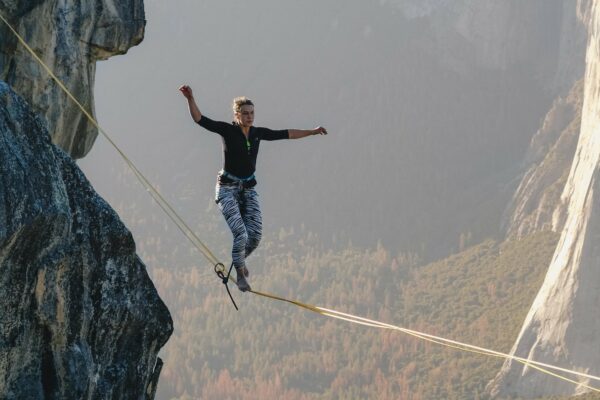Immediately after the operation
The following exercises need to be done regularly throughout the day until you are up and about to reduce the risk of chest infection or blood clots in the blood vessels of the calf. Your physiotherapist will come and remind you to do these.
1. Deep breathing
Breathe in through the nose.
Hold for 2-3 seconds.
Breathe out through the mouth.
Do 3 or 4 deep breaths then rest.
Repeat once more.
2. Exercise to improve circulation in the legs
Point and your toes and then bring them back up like a treddle motion x 10
Then circle your ankles in both directions x 10 each way
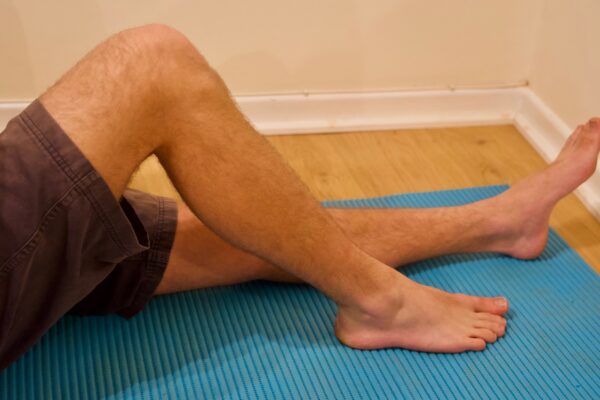
Then do these exercises 3-4 times a day
1. Hip Bends lying flat on the bed
With both legs flat on the bed slide the heel of your operated leg up the bed and then back down
Repeat x 10
If you are having problems with this you can put a plastic bag or tray under the heel to help you perform this movement
2. Hip Abduction
Sit or lie with your legs stretched out in front of you. Keep both legs straight and your toes pointed towards the ceiling.
Move your operated leg out to the side and then back in x 10
Keep your toes pointing to the ceiling all the time through this exercise to avoid twisting the hip.
It may be easier to begin with to put a tray or plastic bag under the heel to help.
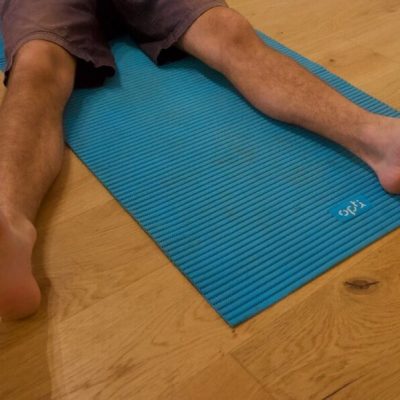
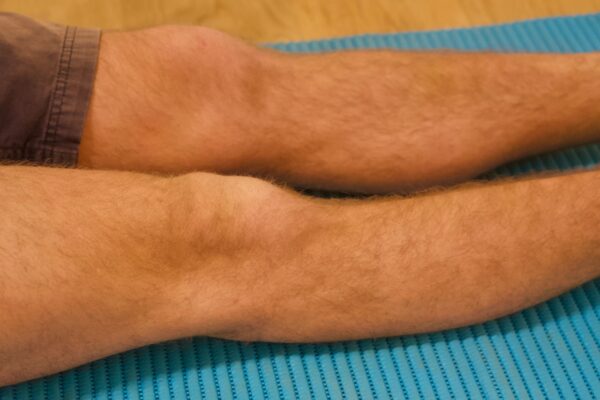
3. Static Quads
The Quadriceps are the main thigh muscle.
Sit or lie with your legs stretched out in front of you.
Squash the back of your knee down hard into the bed and pull your foot up towards you.
Hold for 5 secs. Relax and Repeat 10 times.
4. Buttock Squeezes
Squeeze the cheeks of your bottom together.
Hold for 5 secs and repeat x 10
Getting up out of bed
You will be able to get up on the same day as your surgery if your operation was in the morning but more often than not it will be the following day. You can begin to walk around the ward with a frame, usually full weight bearing . You may then stay out sitting in the chair for a short while. If you feel up to it you will be encouraged to walk to the toilet with a frame. Some patients may be good enough to progress to crutches within 24 hours of their surgery and manage stairs. Most patients will progress onto crutches and stairs 2-3 days after surgery and will then be discharged.
Exercises
Continue the 4 basic exercises above and then add in the following all done lying on the bed.
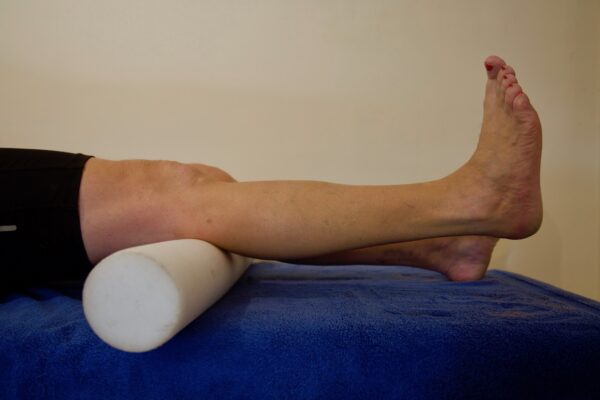
5. Knee extension over a roll
Roll a towel to form a decent sized roll. Put this under the knee of your operated leg.
Now keeping the knee on the roll lift the lower leg making sure you lock the knee each time.
Repeat x 10 holding each time for 5 secs
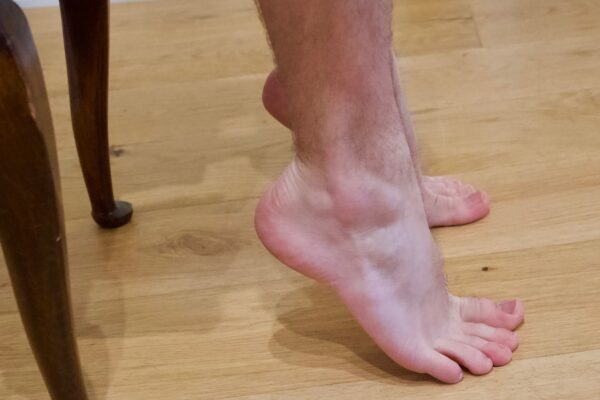
Chair exercises
Whenever you are sitting out in the chair you can do other exercises to compliment the ones you have started in the bed.
Calf pumps
With your feet flat on the floor do a treddle motion with your fee, lifting up your heels and then lifting your toes.
This is excellent for your circulation and helps with swelling.
Repeat x 20 every hour
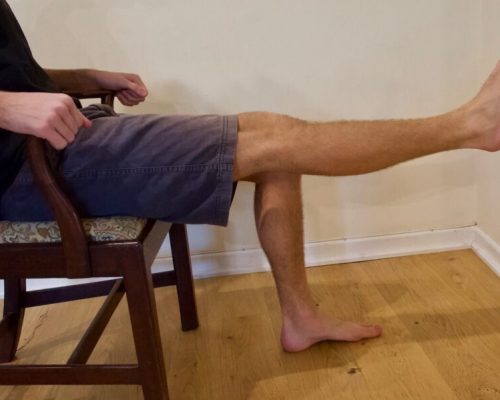
Quads in sitting
Straighten out your knee keeping the thigh resting on the chair x 10 every hour or so.
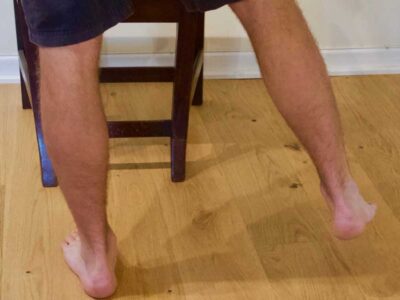
Standing Exercises
These should all be performed holding a solid object
Hip side lifts
Stand Holding the bannisters or the kitchen work top.
Stand on your good leg with your back straight and toes facing forwards.
Lift the operated leg out to the side x 10
Knee raises in standing
Stand holding on to a solid support.
Lift the operated knee up towards your chest.
Repeat x 10
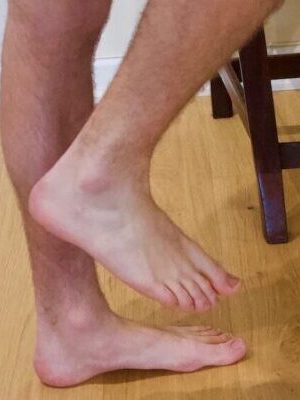
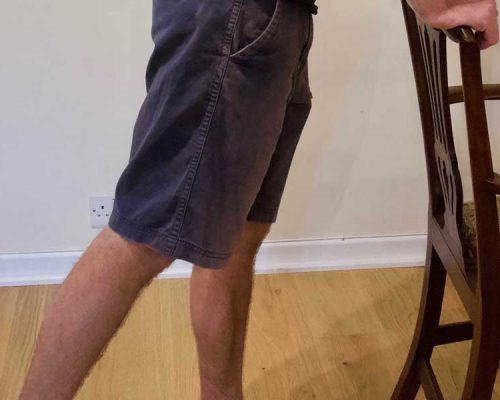
Hip extension in standing
Stand holding your support. Keep your body upright. Lift the operated leg behind you x 10. Hold each time for 5 secs
Tiptoes in standing
Stand holding on to the support go up and down on to your tiptoes x10
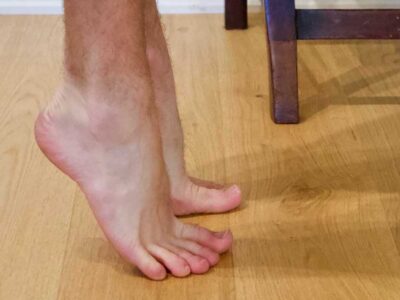
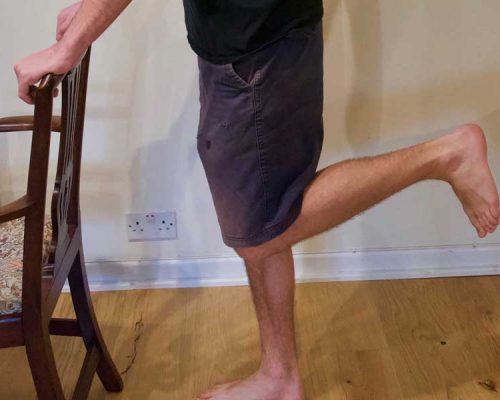
Bottom kicks
Stand holding on and bend your operated knee up backwards as if you are kicking your bottom x 10
Progress the number of each exercise performed as you feel able.
It is natural to feel tired and you may need to rest during the day
Gently progress the amount of walking you do around the house and outside when you feel able.
Walk down front steps and kerbs in the same way as you would with stairs
See video how to do go upstairs with crutches and then how to come down.
2-3 weeks post op
Carry on walking with 2 crutches outside. You may now be able to manage with one crutch around the house. (held in the opposite hand to your hip replacement). Continue to increase the distance you walk each day.
Once the clips have been removed or the wound fully healed if it has been glued you may start to massage the scar if you wish, this will help loosen and soften the scar. Massage the scar with your thumb, making small circular movements along the incision. Change direction of the circles frequently. Do 10-15 circles in each area, then move about one inch along the scar and repeat. Creams such as body lotion, vitamin E cream or E45 can be used.
You can now progress the exercises to add in.
Small bends/Mini Squats
Stand holding onto something solid as before.
Bend both knees. Go as far as you can comfortably but no further than 90 degrees then return to the upright
Position x 10
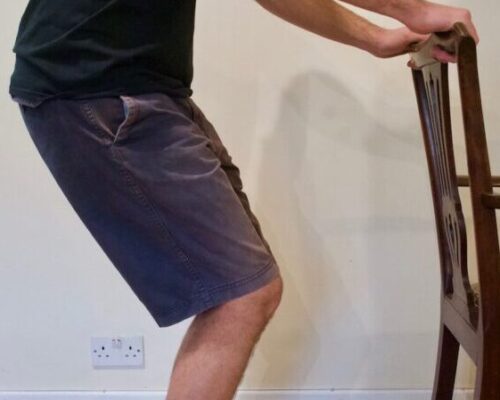
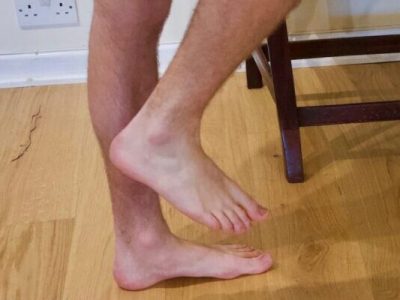
Balancing on your operated leg
Stand holding on to a support.
Lift your good leg just up off the floor and then put down x 10
Try to just hold on gently and then progress to not holding on
Marching on the spot
Stand holding on and march on the spot lifting legs up higher than normal x 10.
Progress to x 20
3-4 weeks post-op
Continue with the above exercises and keep increasing the distance that you walk outside. If you have an automatic car and have had a left hip replacement you may be able to drive but check with your insurance and surgeon.
4-6 weeks post op
You should have an outpatient physiotherapy appointment arranged where your progress will be reviewed and further advice and exercises provided.
Your walking gait will be analysed to see if you can progress to 2 sticks, one stick or none at all.
This will depend if you have no limp and your hip muscles are strong enough to hold your pelvis steady on full weight bearing. If you lurch one way when walking it means your hip abductors are not yet strong enough. So keep working on taking the leg out to the side in standing.
Even if you are on sticks you may find you are able to move around the house with no help. However it is better to use an aid rather than grabbing hold of the furniture.
Walking upright with a stick encourages better posture
Travelling as a passenger in a car for longer distances may still be uncomfortable.
You may be able to drive yourself at this point if you have little or no pain and have sufficient reflexes to be able to do an emergency stop.
Further exercises to progress on to when you are able
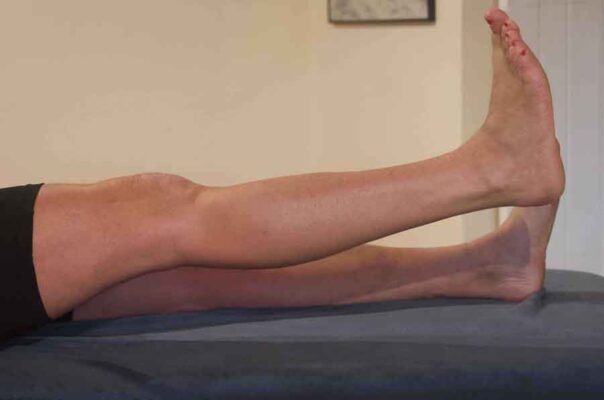
Straight leg lift- Lie on your back on the bed. Lift the leg if able straight just off the bed with knee locked straight. Keep the knee locked all the way through the exercise.
Lift the leg a few inches off the bed x 10
When this is easy to perform you can then take it out to the side slightly keeping the toes facing the ceiling at all times.
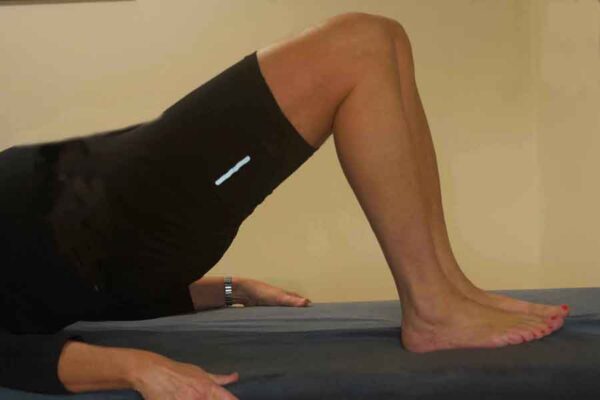
Bridging
Lie on your back with your knees bent.
Lift your bottom off the bed until your hips are in a straight line with your knees and shoulders.
Hold for 5 secs
Relax. Repeat x 20
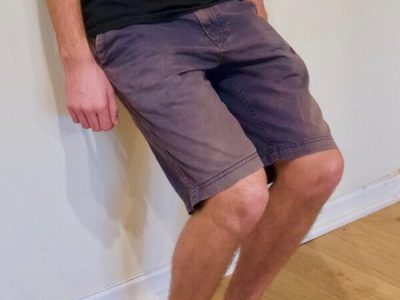
Wall slides
Stand by the wall with your bottom and shoulders against the wall. Slide your bottom down the wall. Do not go further than 90 degrees hip and knee bend
Repeat x 10-20 as able
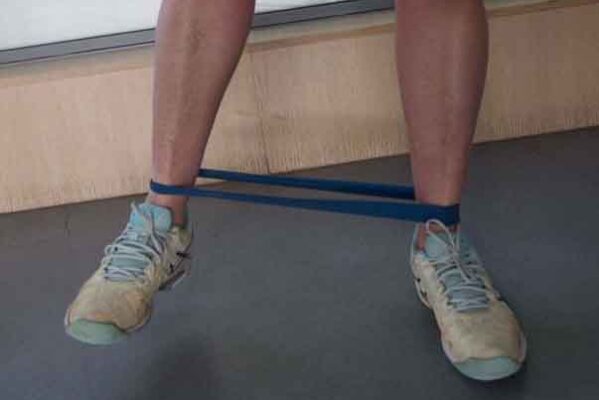
Use a Theraband
Tie it in to a loop and put around your ankles.
Do all the standing exercises using the band to resist the movement i.e lifting leg out to the side and extending leg backwards.
See Theraband exercises link here
Step up and down on to a low step
Put the operated leg up on to a small step.
Then step up with the good leg and back down again with the good leg. Repeat x 10
Progress to x 20
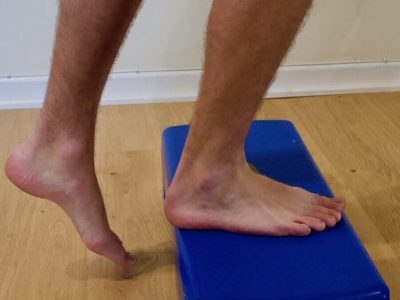
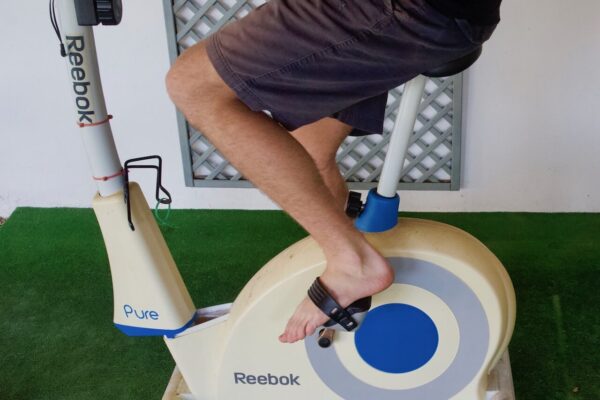
Static bike- Keep the seat raised a little higher than you would normally have it. Start with no resistance initially and increase this as you become stronger. If at first you cannot make a full revolution of the pedals spend a few minutes rocking the pedals backwards and forwards as a warm up. If after the warm up you still cannot pedal correctly continue with the rocking motion pushing to end of range and holding for a few seconds.
Rock or pedal for 5-10 minutes 3 times a day and gradually increase the length of time as the hip becomes more comfortable.
Exercises in water- Hydrotherapy
If the wound has completely healed or you have a good waterproof dressing on) and you can get into a swimming pool safely you may like to go and do some exercises in water.
You must not start breaststroke until 6 weeks post op but there are plenty of things you can do before that-
see Hydrotherapy exercises for Hip replacement
Hip- Early/Easy Hydrotherapy exercises
6-8 weeks
You should now be moving around the house and outside without walking sticks. If not doing so already you should be able to drive a manual car assuming you are able to do an emergency stop. You may also return to a sedentary job, if you can get to work. It is no longer necessary to avoid crossing your legs. If you would like a bath please try it first with no water and fully dressed to make sure that you can get out easily.
Further exercises
Step ups on a higher step
As before but on a higher step.
Increase the number to x 20
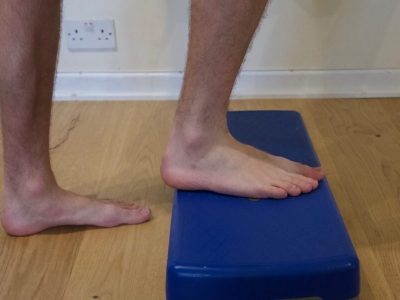
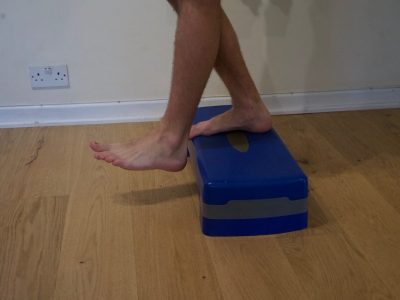
Step downs
Stand on the bottom step facing down the stairs. Hold onto the rail.
Try and lower your good leg to the floor.
Straighten up and return foot to join the other foot again.
Repeat 10 times.
Hip extension in prone
Lying on your front try and lift the operated leg towards the ceiling.
Hold for a few seconds, relax.
Repeat 10 times
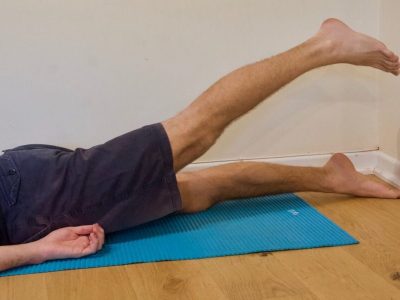
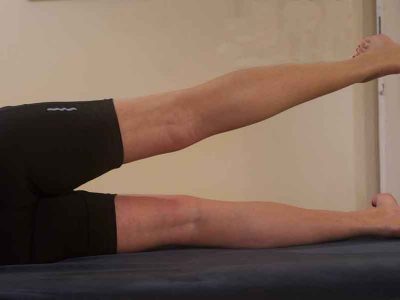
Hip abduction in side lying
Lie on your un-operated side with your legs straight. It is best to put a pillow between your legs.
Lift your leg towards the ceiling taking care to not turn the toes towards the ceiling or to roll backwards.
Hold for a slow count of 10, relax and repeat 10 times.
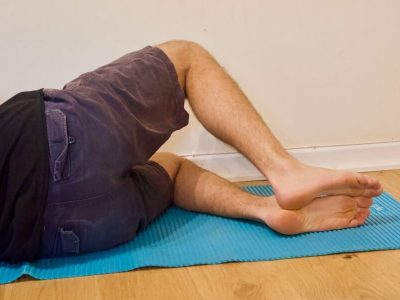
Clam shell
Lie on your un-operated side.
Bend both knees. Keep the feet together and lift the operated leg up and out as if a clam shell is opening. Do not allow your hips to roll backwards.
Hold for 5 secs and repeat x 10
3-6 months
Continue with the exercises that you find of most helpful.
The swelling should now have resolved but some people may still have a little left.
Sports you can return to include Golf, cycling, doubles tennis, dancing and gardening
You may also return to light physical work.
6 months
You should now be back to full activities with the exception of
high impact sports.
All swelling and stiffness should have gone but there may still be some residual weakness of the muscles of the hip.

